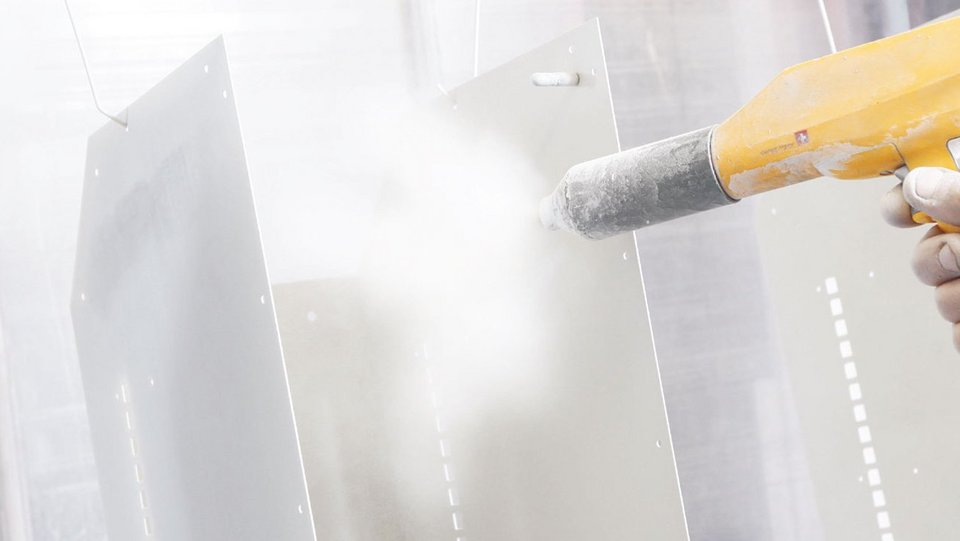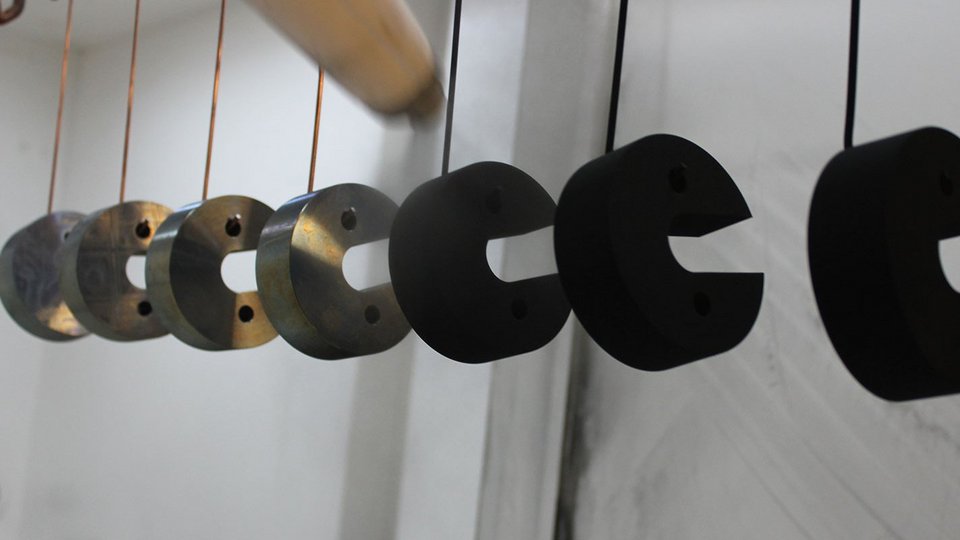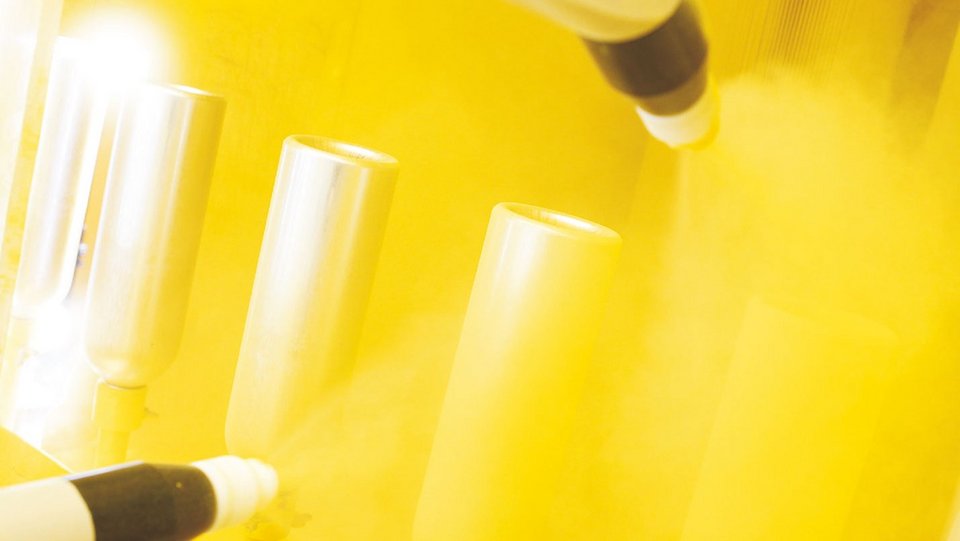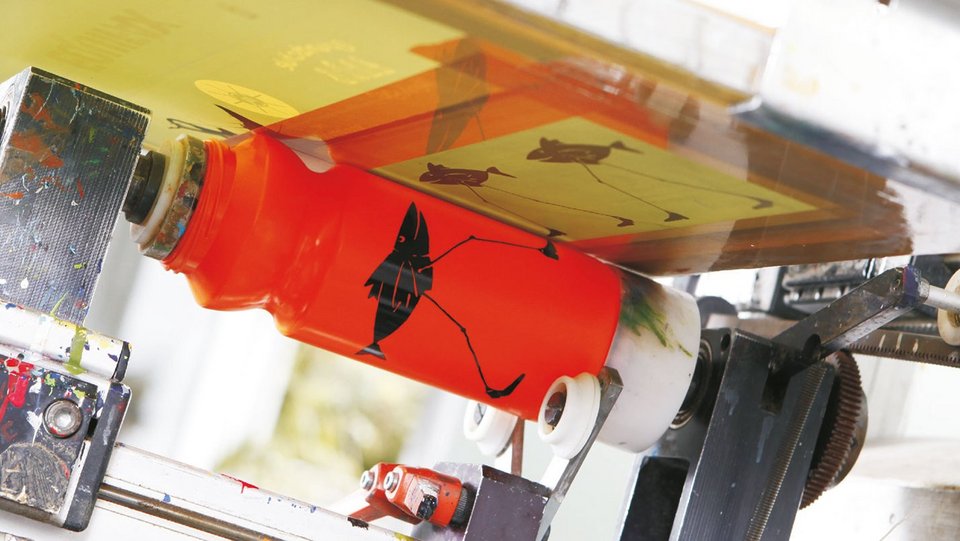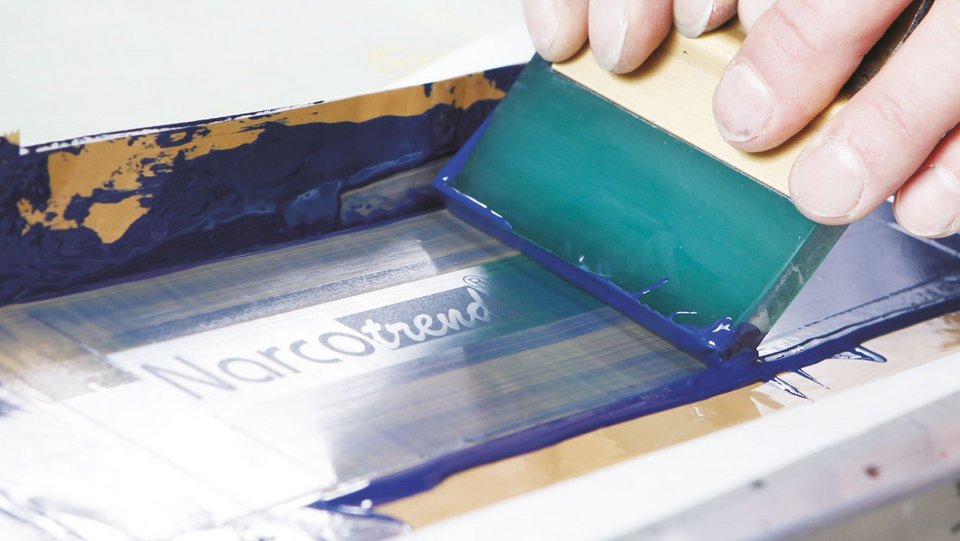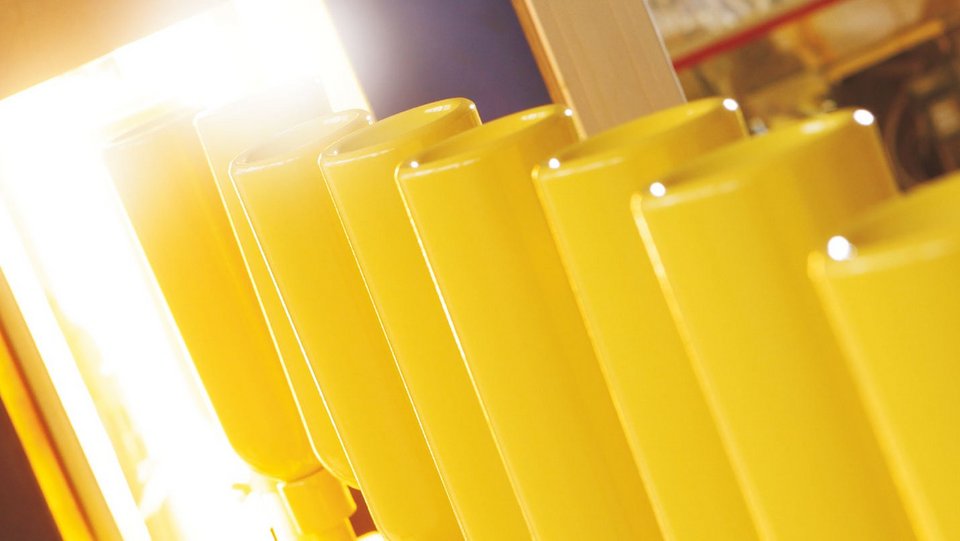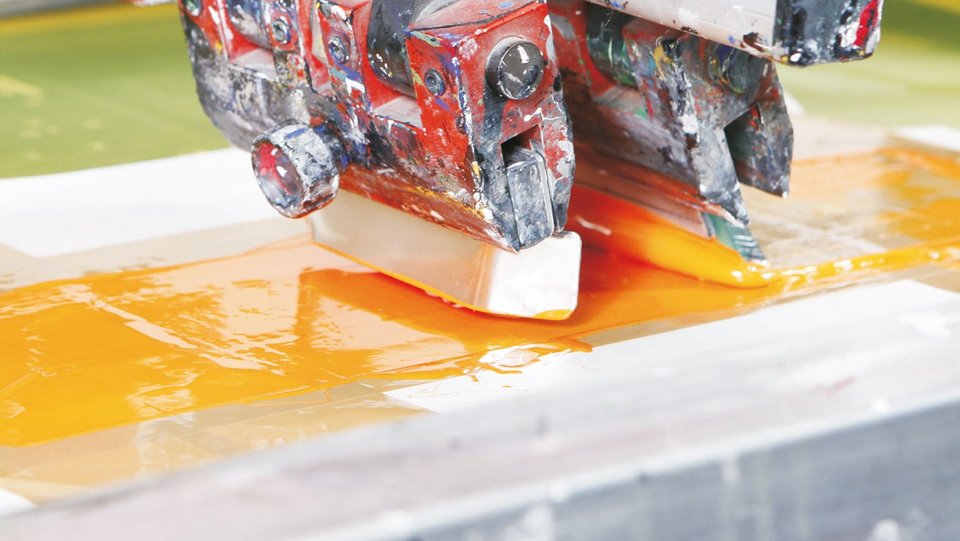Coating powder is electrostatically charged and sprayed onto the workpieces, where it is deposited and adheres. In a baking oven, the powder coating is then baked at temperatures of about 200 degrees Celsius and merges to a uniform film. The advantages of this environmentally friendly technology are:
- individual RAL or special colors
- high corrosion protection, even at very high temperatures
- very good mechanical properties (impact resistant)
For this procedure a workpiece is dipped into the paint. For electrophoretic coating a paint solution and suitable film formers create an electric field of 50 to 300 V and the workpiece is used as grounding. Electrophoretic coating has been developed by Ford as an anodic coating to produce a protective coating for cars. Today it is applied throughout the automotive industry as cathodic dip painting.
The pad printing process, which works on the principle of indirect gravure printing, has become one of the most important procedures in imprinting items. The surface of the printing plate bears the recessed image that is to be printed. A squeegee presses the ink into the deeper placed print image and cleans up the remaining surface of the printing plate.
After that an elastic printing pad moves over the plate and takes on remaining paint in a lifting movement, to then transfer it onto the item, thus indirectly print it.
Due to its flexibility, the printing pad assumes the shape of the object to be printed and therefore can transfer the motif to the print substrate perfectly. Unlike screen printing it is possible in pad printing to print even convex and concave surfaces (single- or multi-colored).
The most common application type in the paint industry is spraying. For spraying pressure atomizers are used, which apply the liquid by a compressor at low pressure (0.5 to 1 bar), high pressure (4 to 8 bar) or by an airless spray gun (60 to 350 bar).
The screen printing process, which works on the principle of the stencil printing, alongside pressure pad printing has become one of the primary methods in printing. The printing plate is a stretched fabric on a sturdy aluminum frame. This fabric bears a template with impermeable and permeable parts where color is applied according to the print pattern. The paint coating in screen printing is 5 to 10 times thicker than in other printing processes. Therefore, it is particularly suitable for high-quality parts.
The paint is put onto the stencil with a floodbar to fill the color permeable areas with color. Then the printing plate is positioned above the workpiece without allowing any direct contact between printing screen and plastic item (descent, printing form distance). The paint is pushed through the fabric by pulling the floodbar. The printing screen gets in touch with the plastic item only at the edge of the floodbar. The color separates from the printing plate and remains on the printed part.
